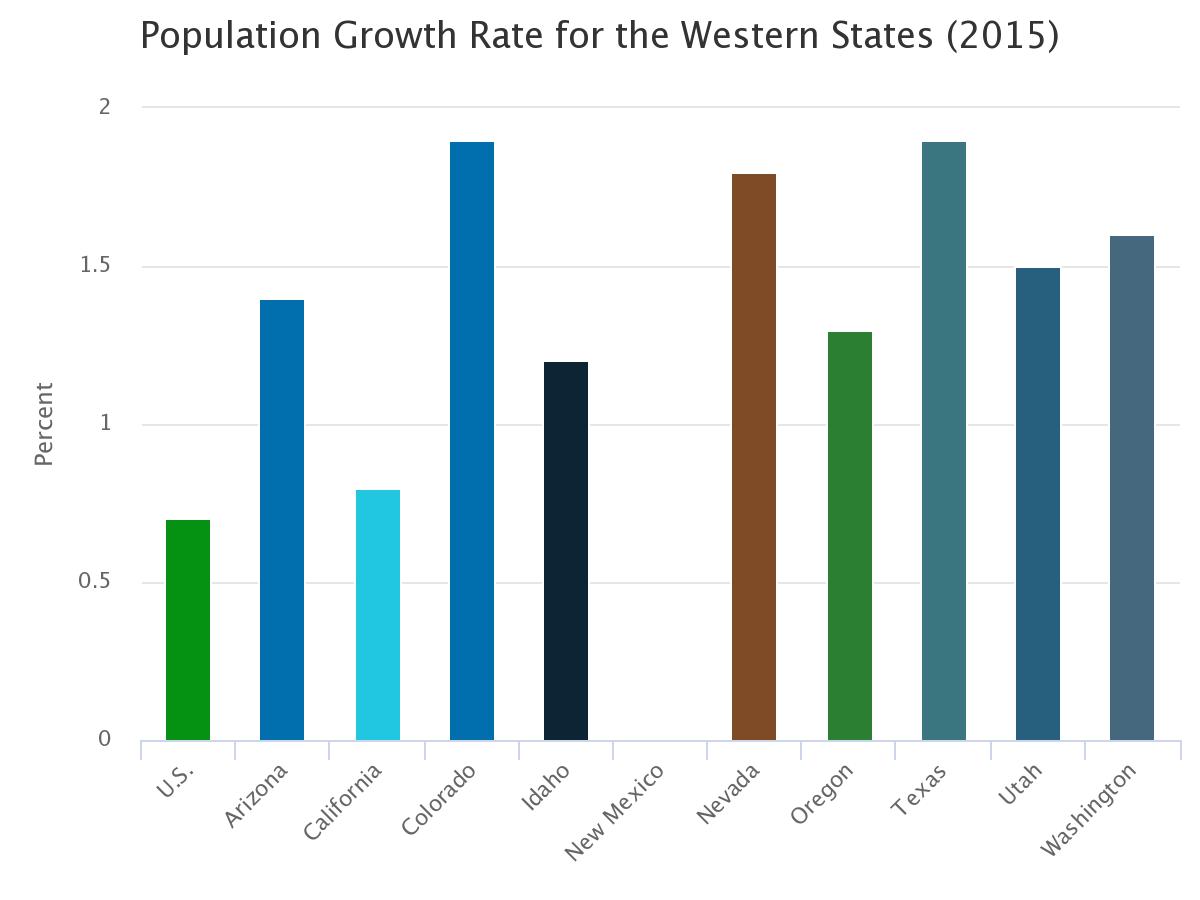In 2015, the Tucson Metropolitan Statistical Area (MSA) posted a slight increase in population, but growth lagged behind the state and nation. Tucson’s population increased to 1,009,371, representing an annual growth rate of 0.2%, the slowest since the Great Recession. The state of Arizona and the nation posted significantly faster population growth between 2014-2015. U.S. population grew at a rate of 0.8%, while Arizona’s growth rate was nearly double that at 1.4%.
Population is a key measure of a region’s size and growth. Population change is the result of net migration and natural increase (births minus deaths). Net migration flows can be due to employment opportunities, the quality of local services, schools, and local amenities such as leisure and recreation. Population growth can spur regional economic development by increasing demand for housing, goods, services, and infrastructure.
| Total Population | Growth Rate (2014-2015) | |
|---|---|---|
| Tucson MSA | 1,009,37 | 0.2% |
| Arizona | 6,758,251 | 1.4% |
| U.S. | 321,418,820 | 0.8% |
Of the 10 western states tracked on the Making Action Possible (MAP) Dashboard, Colorado and Texas posted the fastest population growth between 2014 -2015 with a rate of 1.9%. All of the western states, except New Mexico, surpassed the national growth rate of 0.8%. New Mexico’s population was stable.

Within the state of Arizona, Pinal was the fastest growing county in 2015. Pinal’s population growth rate of 2.6% was nearly a full percentage point higher than the second fastest growing county, Maricopa (1.7%). Additionally, the counties of Coconino, Santa Cruz, and Yuma outpaced or equaled the state’s population growth rate of 1.4%. At the other end of the spectrum were Cochise and La Paz. Both counties posted a decrease in population between 2014-2015 with losses of -0.4% and -0.1%, respectively.

Population growth rates are computed from population levels reported by the Arizona Department of Administration (ADOA) and the U.S. Census Bureau Annual Estimates of the Resident Population. Population data for Arizona is reported by both the U.S. Census and ADOA, for the purposes of this report we use ADOA estimates for all geographies located in Arizona. All other data comes from the U.S. Census Bureau













